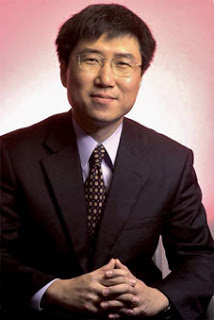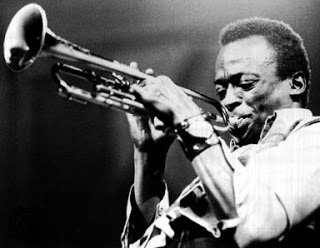Humans, for the most part, Simon suggests are irrational animals. The reason for this is not because of anything innate but rather that the world around us is a place so complex that we struggle to fully understand it and, as such, find it difficult to make the best decisions at any given time due to our brain being unable to process all of the information we continuously receive.
Perhaps the best example to further illustrate this that I can think of, that I can apply here, however, is jazz musicianship. Regardless of what many people may think when listening to the less melodic side of the genre, jazz musicians do not simply play whichever notes they want at whatever time they want without any restrictions. Jazz, although one of the most liberal forms of music and one open to great degrees of spontaneity, is mastered through placing restrictions on each of the individuals in the band (which, incidentally, allows them greater freedom to express themselves than if each of the band could play whatever notes they wanted at whatever speed to whichever beat they preferred). Rather than haphazardly hit notes, the musicians will have firstly have agreed on a time signature (a beat) they will all play around. On top of this they will all play within the same Key (meaning a preconceived selection of notes). If the members of the bad decide to steer clear of such limitations and the backing band were to play in the key of "C", the soloist were to play in "C#" and the bassist in the key of "F#", however, then the ensuing sound would constitute a cacophony of sorts. This thinking can be applied to clothes - read the previous sentence back but consider, instead of musical keys, the aesthetic cacophony that teaming mismatching garments would create (i.e. Shell suit pants with work boots and a tuxedo top half of dress). A lovely, free flowing symphony such as Pachelbel's Canon is the musical equivalent of a classic three piece suit - there is real harmony and understated elegance. Wearing jeans with a hoodie, white trainers and a beanie is the equivalent of a seven year old on a saxophone playing N-Dubz being accompanied by their two year old brother playing Phil Collins on a violin - it does not sound good.
This shows that some people dress badly because, quite simply, there are so many items of clothing available their minds are unable to process this. This oftentimes leads to Chris Brown Syndrome where an individual will, in the face of so many decisions, simply throw their money at the first expensive items they see regardless of whether they are an eye-sore or aesthetically complimentary to any other item of clothing they own. By limiting the choice of clothes we wear we can, in fact, become much better dressers in the same way that putting in place restrictions on our musicianship (for example playing at a consistent 98 beats per minute rather than changing this every fraction of a second). As long-time readers of the blog will be aware, I believe male fashion hit it's height during the Golden Age of Hollywood and this was, in part, due to the fact men knew the confines of which they were to dress.
Less refined dressers may think that there is no room for experimentation within a standard three piece suit/smart shoes context yet this is quite simply baloney. Once a man has settled on this attire, he is then able to consider colour schemes, patterning, materials and even accessories such as pocket watches. Much like the master jazz musicians never insisted on playing at different speeds to the rest of his band but could still add bravura flourishes to their musicianship, well dressed males can easily bring individuality to their dress without being ludicrous. Miles Davis never complained of running out of notes - he just utilised the ones he had available to him perfectly.




ohhh the korean alphabet confuses me sometimes. 장 is supposed to be jang, but his name is actually chang and spelled 장, which confuses me @.@ waaaeeee</3
Reply DeleteDon't get me wrong, because you're a wonderful writer and completely brilliant, but the first part of this post goes right over my head. I think it might be from too long of a day. ah. i'm sorry.
I agree on the too many choices part. When you give me a store and tell me to pick out one outfit, i'm either going to take something from a mannequin or give you a mixmatched boring outfit.
-Jae
I thought I did go a bit overboard - I should have edited it down a touch!
Reply DeleteI also get confused at "우" sometimes. I've seen it as "oo" and "wu" or sometimes just "u" (as in the "Uri" bank)
I think there's a general disagreement between folk on how to Anglicize some of the letters which is tricky for me!